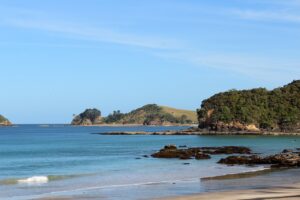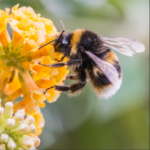Community Support for a GE-free Coastal Marine Area in Northland

Media release: Soil & Health Association of NZ
30 October 2018
Usually associated with land-based farming, the Soil & Health Association is now wading into the coastal marine area in its latest bid towards an Organic Aotearoa New Zealand.
A precautionary approach is needed to any genetically engineered (genetically modified) organisms that may be trialed or used commercially in the Coastal Marine Area (CMA), says Soil & Health.
The Association is therefore encouraging the Northland Regional Council to adopt precautionary provisions for GMOs in the Proposed Regional Plan for Northland, and is presenting its case to the Council today. (Soil & Health’s submission can be viewed at https://soilandhealth.org.nz/submissions/submission-on-proposed-regional-plan-for-northland/)
“We want to ensure that the Council adequately protects growers and producers in Northland from the significant adverse effects posed by GMO use,” says Soil & Health co-chair Bailey Peryman.
The Proposed Regional Plan for Northland as currently drafted fails to regulate GMOs in the CMA, despite the Northland Regional Policy Statement placing an obligation on the Council to take a precautionary approach to GMOs in the region.
“We call on the Northland Regional Council to follow the lead of Auckland Council which has already adopted precautionary provisions and banned the outdoor release of GMOs in the CMA via the Auckland Unitary Plan,” says Peryman.
GMOs in the CMA could threaten the economic sustainability of a wide range of activities that benefit from having GE-free status. This includes organic and non-organic primary producers in the Northland Region, including oyster farmers, and any growers who collect seaweed from the coastline for fertiliser.
“Organic certification standards prohibit the use of any input containing GMO material. A certified organic farm could be contaminated by GMOs in the CMA by using seaweed harvested from the coastline. The composting of seaweed is a popular form of natural fertiliser for crops for many organic farmers. Any GE contamination from seaweed would mean having to stop harvesting seaweed for fertiliser use or otherwise risk losing their organic certification.”
“Aquaculture is a growing industry in New Zealand with exports to nearly 80 countries and our seafood regarded as some of the best in the world. Markets around the world don’t want seafood products that are contaminated with GMOs,” says Peryman.
“All New Zealand fish and shellfish products currently enjoy GE-free status. But contamination of kai moana by GMOs could mean the loss of the premium that the GE-free status and reputation attracts.”
“New Zealand has already seen several GE field trials breach the conditions of approval,” says Peryman. “GMOs in the CMA run additional risks due to the fluid nature of the marine environment, making buffering and containment impossible. We have to also expect that activities in the CMA can cross into terrestrial and freshwater ecosystems.”
If GMOs were released into the Northland CMA it would no longer be regarded as a GE-free region. This could affect the marketing of products within New Zealand and internationally, and premium returns.
The latest OANZ Organic Market Report 2018 reaffirms that the growth in New Zealand organic production and exports is very strong, reflecting global trends. It makes sense economically and environmentally to protect and encourage organic primary production.
ENDS
Media contact
Bailey Peryman
021 1227 638

